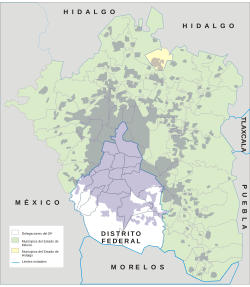
I posed this question to an environmental policy class seminar I was in during my third year: if on the day of your graduation as an Environmental Studies/Science student a person from a large oil company offered you a multi-year position as an environmental consultant with a $250,000 salary, benefits up the wazoo, a 40-hour work week and your choice of living location, would you take it?
Surprisingly, very few if any from the 15 person class said they would. The main argument was one of ethics, where the majority of my peers would be unwilling to 'sell their soul' to work for the groups we've all learned to despise.
Fair enough, but perhaps the naive optimist in me believes that not all big corporations are inherently evil and that they be wanting to at least do something pro-environment, if not for intrinsic reasons than at least for business purposes. To this a few said that such a position would simply be window-dressing, offering lip service for an organization that really doesn't care. Although you'd get a hefty paycheque, the frustration involved with such a position might be enough to drive you over the edge. Not to mention, of course, the degrading feeling that might come if you feel your role is only perpetuating the wrongs you seek to right.
Personally, I would take the job. Aside from the wonderful financial perks -- I might be an environmentalist but I certainly wouldn't decline a sweet boat or a Porsche -- I point to one particular argument I've explored before in a different arena: the law of diminishing returns. This simple idea says that as we put effort into something, the effect one 'unit' of effort will have will diminish over time.
If, for instance, you have a test to study for, the first hour you study may increase your potential grade from a 50 to a 70, but the next hour will only improve it from a 70 to an 80, then 80 to 85 and so on until each extra hour you study really isn't making a difference.
So if we take this idea into the grand context of say, combatting climate change, our efforts (financial, political, time-intensive, etc) would have a bigger impact if put towards aspects of the environment that are already quite bad. Putting efforts into improving the environmental performance of the traditionally poor environmental performers (fossil fuel firms, manufacturing, transport industry, etc) might have a much bigger impact than putting the same amount of effort into other already less-environmentally destructive performers, such as investing millions to make fuel-efficient engines slightly more efficient (which might be the equivalent of raising your mark from a 90 to a 91).
The question of individual effort should be raised. It is well and good that changing the behaviour of these 'dirty' firms would have a large impact in our climate struggle, but are these large conglomerates, like the oil companies, not already so large and influential that actually implementing this change from an environmental consultant's position would be next to impossible if not the most frustrating endeavour one might venture on?
Would it be frustrating? I imagine so. Next to impossible? Could be. But are they too big? No.
One of the world's largest financial institutions, the World Bank, was once without an environmental program or department. Unlike the majority of other major banks, the World Bank focuses much of its attention on development, first in post-war Europe and later in the less-affluent countries of the world. Its projects have had massive environmental impacts, yet it wasn't until 1971, 26 years after its conception, that it first developed any sort of environmental program. It was resourced by one person for many years, who was later able to increase the size of the department to six staff.
This was an incredibly frustrating time, especially since the World Bank did not require environmental assessments on any projects up until 1989, making the environmental reviews by even six staffers next to impossible. As you can imagine, the other departments were less than inclined to cooperate with the toothless environmental department. However, thanks to the diligence of the pioneer staffers, the World Bank's environmental department is now one of its biggest. Billions of dollars are invested in environmentally-focused projects. (Although the environmental benefits of some of these projects are quite controversial).
It had to start somewhere. So it could certainly start with grabbing such a position, especially with such cushy benefits -- not unrealistic either, considering many environmental assessment folks at the publicly-owned Ontario Power Generation make over $125,000.
Corporations aren't necessarily evil, but they can be a tough nut to crack. But the benefits of cracking such a nut could be more influential than any of us know. I wouldn't, however, count on such a cushy job being offered right after graduation, but you never know...(hint, hint ExxonMobil).
Would you take the job?


